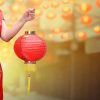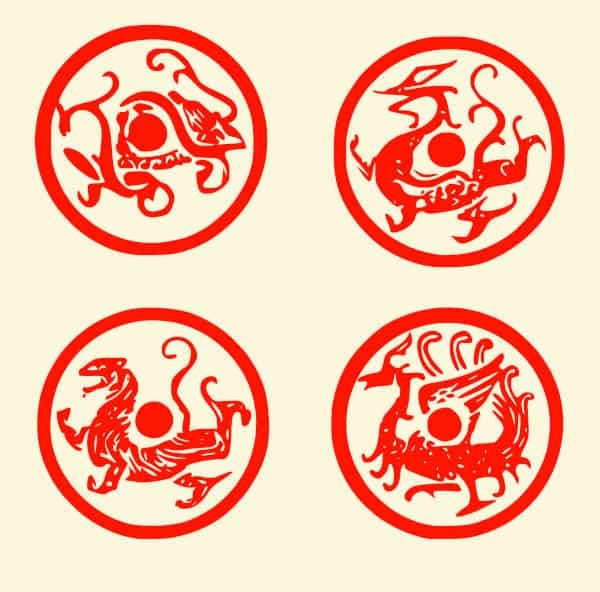
Chinese astronomy believes that the ecliptic sky is divided into four equal parts, and each of these sections’ is commanded by a mythological creature, and together they are known as the Four Sacred Animals, Four Celestial Animals, or simply the Four Symbols (四象; Sì Xiàng, literally meaning “four images”).
Each of these sections’ contains 7 mansions, and thus we have 28 mansions in total. These 28 mansions have quite a similar function to the western zodiacal constellations, although these Mansions are commanded by the Moon’s movements rather than the Sun in western astronomy. This system of 28 Mansions allows the Ancient Chinese to determine the time of the year and seasons.
This is why each of the Four Sacred Animals represents a season: the Azure Dragon of the East representing the Spring, the Vermilion Bird (Phoenix) of South for the Summer, White Tiger of the West representing the Autumn, and Black Tortoise of the North for the Winter. Sometimes, the Qilin (representing the Central Midsummer) is also included with the four. Again each, of these animals commanded 7 Mansions (constellations)
History of The Four Sacred Animals
There are so many ancient documents and literature that mentioned the four Celestial Animals, showing how these Four Symbols are deeply ingrained in Chinese culture and Feng Shui. One of the most prominent depictions for the Four Sacred Beasts is in the Shan Hai Jing (山经), an ancient text as old as 4th century BC which is essentially a compilation of mythic geography, with the four heavenly beasts as one of its main focus.
However, there are more recent discoveries that shown how these four entities have been depicted in an ancient neolithic tomb, Xishuipo, in Puyang, Henan, that is believed to be as old as 5,300 BC. In Xishuipo, which was discovered in 1987, we can see a depiction of the Azure Dragon and White Tiger, complete with the directions they represent.
Read also: What are the Four Evil Creatures of Chinese Mythology? – Opens in new tab
The Azure Dragon
The Azure Dragon (simplified Chinese: 青; traditional Chinese: 青, qīnglóng) guard the East direction and is generally depicted as a symbol of protection. In Feng Shui, it is believed that the Azure Dragon is capable of dispelling evil and negative energies as an almighty beast.
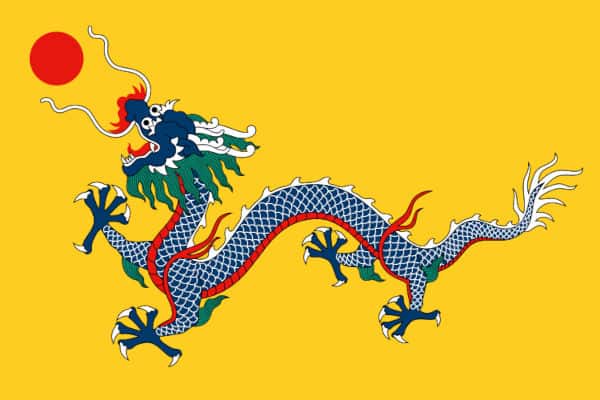
In the Chinese theory of five elements, the Azure dragon represents the wood element and the spring season. It is interesting to note that the other Chinese dragons are more commonly associated with water, but the Azure Dragon is an exception by representing the wood element.
The Dragon is often paired with the Vermilion Bird and the two together represent both conflict and harmony: the yin and yang, the emperor (dragon), and the empress (vermilion bird).
The dragon represents the yang energy, and the color green/blue, and so it is often portrayed to be surrounded by blue water or clouds.
The Azure Dragon commanded the seven mansions in the East: Horn, Neck, Root, Room, Heart, Tail, and Winnowing Basket, and it is believed that when these mansions are joined, they form the shape of a dragon.
The Azure Dragon is considered to be the noblest of all animals and is actually considered the head/leader of the Four Sacred Animals/Four Symbols. Unlike the Western dragons, Chinese dragons, including the Azure Dragon, are believed to be benevolent and just, protector of humans and bringer of good fortune.
The Vermilion Bird
The Vermilion Bird (Chinese: 朱雀; pinyin: zhūquè) commands the South direction, and ancient Chinese astronomy, the Vermilion Bird or Red Bird represent the planet Mars along with seven southern Mansions, which when combined together look like a bird with its wings.

It is also often called the Zhuiniao, and is believed to have a chicken’s head, snake’s neck, swallow’s chin, fish’s tail, and five-color feathers.
Quite obviously the Vermilion Bird also represents the fire element and is often depicted as a flame-covered pheasant.
It is worth noting that the Vermilion Bird is not the Chinese Phoenix or Fenghuang. Instead, the Vermilion Bird is believed to be the ruler of all birds and is widely used as the symbol for the Chinese empress.
The Vermilion Bird represents the summer season, and also symbolizes prosperity and good luck. The seven mansions are Well, Ghosts, Willow, Star, Extended Net, Wings, and Chariot.
Online Courses about Chinese Culture from Udemy (Aff.link)
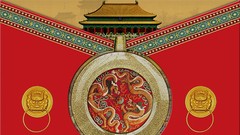
The White Tiger
The White Tiger, (Chinese: 虎; pinyin: baíhŭ), is believed to be a terrifying but honorable beast: it eats humans, but also believed to protect people from evil and negative energies. The Baihu is in charge of the West sky and is also the symbol of power, authority, bravery, loyalty, and justice, and in Chinese mythology is often believed as the God of War. This is why we often see the white tiger in the military flag and seal in China.

Painting tigers on gates and doors was actually a custom back in the times of the Han Dynasty (202 BC-AD 220), and this practice is believed to dispel demons and ghosts from households.
The white tiger is thought to be benevolent, and more powerful than the ordinary Chinese tiger. According to Chinese mythology, the tiger’s fur only turns white when it reaches 500 years old, and in ancient China, it is believed that the White Tiger would only appear when the Chinese emperor ruled with absolute virtue when peace reigned throughout China.
White Tiger is often depicted together with Azure Dragon in Feng Shui applications and in arts. For example, in ancient law courts, the Azure Dragon is often depicted on the left, while the White Tiger is depicted on the right.
The White Tiger also represents the autumn season and metal element.
Black Turtle
The Black Turtle (Chinese: 玄武; pinyin: xuánwŭ) commands the North direction and also represents the water element and the winter season.
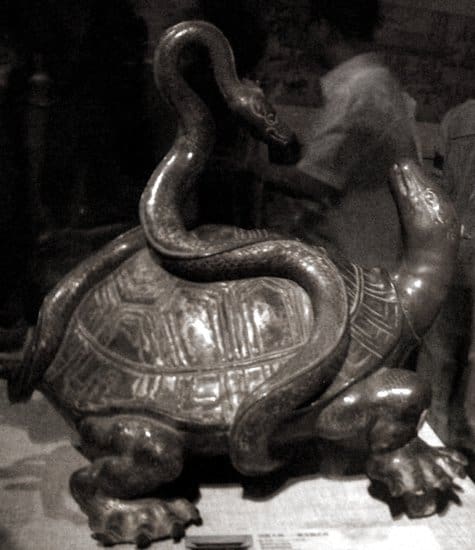
The Black Turtle is depicted as a turtle giving divination, with a black back. It is believed that the Black Turtle could take questions to ancestors in the afterlife and then bring back the answer.
The Xuanwu is also a symbol of longevity.
According to the classic novel, Journey to the West, the Xuanwu was a king of the north with two generals serving under him, the Snake General and Tortoise General, ruling a temple at Wudang Mountains in Hubei province. This is why there are a Snake Mountain and Tortoise Mountain on the opposites sides of a river in Wuhan, Hubei.
This is also why the Black Turtle is often depicted together with a snake, most commonly with the snake coiling around the Turtle’s back.
Feng Shui Applications for The Four Sacred Animals
Azure Dragon Feng Shui Applications
It is believed that the Azure Dragon resides on the left side of the property, and thus homeowners who practice Feng Shui often create gardens (wood element) on the left side of the house to signify the presence of the Azure Dragon. Green plants further emphasize the green/blue color of the noble Azure Dragon.
It is believed to attract wealth, and for households with men as the head of the house and the breadwinners, it is very important to have this left side of the house. If it’s impossible to set up a garden, then you can use a fence as a substitute.
For statue placements, the Azure Dragon should be shorter compared to the Black Turtle, but taller/higher than the White Tiger.
Related reading: “A Concise Timetable of Feng Shui History“ –Opens in new tab
Black Turtle Feng Shui Applications
The Black Turtle guards the back of the house, acting as the pillar of protection for the household, keeping the household safe from evil energy and betrayals.
The classic practice is to have a mountain behind the house to symbolize the presence of the Turtle. However, in modern households, skyscrapers can be an alternative to mountains, or we can also have tall trees as an alternative to serving the purpose.
In general, it’s ideal if the back of the house is sitting in front of a tall structure to signify the presence of the Black Turtle.
Feng Shui Diploma Course
- Certified Course
- Accredited Course
COURSE INFORMATION
- 10 Modules
- Lifetime Access
- Study Group Access
Use “LIGHTWARRIORSLEGION466 ” code for 70% off.
Vermilion Bird Feng Shui Applications
The Vermilion Bird guards the front of the house, the first area of contact of the house with the energy of the surrounding areas. The Bird protects the house from negative energy and allowing auspicious energy to pass.
The general practice is to have the front of the house flat and low-lying, or you can also create a small hump in front of the house to symbolize the presence of the Vermilion Bird.
White Tiger Feng Shui Applications
The White Tiger guards the right area of the house, representing the feminine (yin) energy while the Dragon on the right represents masculine (yang) energy. Households with women as the leader and the main breadwinner should pay closer attention to this area, as this will be the gatekeeper of your fortune vault.
It’s best to place the tiger statue in a seated position to symbolize calmness and strength. It’s important to keep this area clean and tidy, not to agitate the White Tiger.
If the house is missing its right area (for example if you share a wall with your neighbors), then you can use a fence as an alternative.
Related reading: “Chinese Good Luck Charms To Bring Good Fortune” –Opens in new tab
Online Courses about Feng Shui from Udemy (Aff.link)
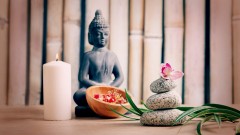
Stay in Touch
 Join our newsletter by using the forms on this website or click here!
Join our newsletter by using the forms on this website or click here! Follow us on Google News
Follow us on Google News Follow us on Facebook
Follow us on Facebook
Featured Image “The Four Symbols” by RootOfAllLight from Wikimedia Commons (CC BY-SA 4.0)


